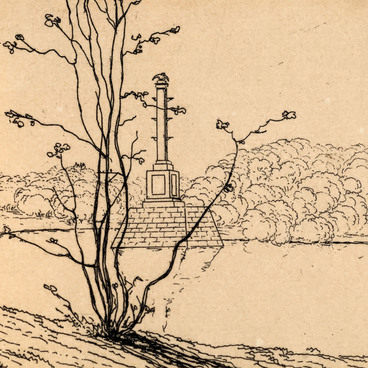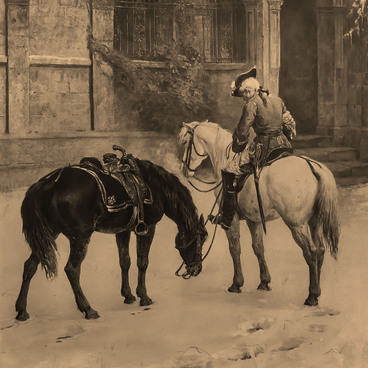The painting depicts a view of the Naples Embankment, which opens from Posillipo Hill in the northern part of the Gulf. This work belongs to veduta, one of the most popular genres of the 18th and 19th centuries. This was the name given to bright graphic sheets depicting everyday urban landscapes or architectural monuments. Usually, such drawings were created by local artists for tourists.
Vedutas can be rightfully considered the precursors of today’s postcards with urban views. Travelers have always wanted to take something as a souvenir back from other countries, and the creations of local artists have satisfied this need. Not surprisingly, such works were produced en masse long before the photograph appeared.
Eugene Boratynskiy acquired “Naples from Posillipo” during his stay in Naples in April - July 1844. Posillipo Hill offers one of the best views of the city, this is the view depicted in the painting.
The road along the sea coast was built in Naples in the 1810s to attract tourists. Travelers were shown the remains of ancient villas, amphi-theatre and grottos, in one of which, according to local legend, the “master of poetry” Virgil was buried.
“We live in Naples, ” - wrote Boratynskiy to his family from Italy – “as if it is a village: our days are monotonous, but the sky, the air, the sea, the south leave no time to be bored or to get engrossed in thought. I enjoy the same thing every day and always relishing it as a new one. Neapolitans' cheerful temper, their extraordinary vitality, their endless promenade, processions, feast days with fireworks, all of this is so festive, so absolutely jovial that you can”t help but get carried away, not give in to this childishly goofy and exalted distraction. This life is to my liking: we are walking, bathing, sweating and not thinking about a thing in the whole world”.
Vedutas can be rightfully considered the precursors of today’s postcards with urban views. Travelers have always wanted to take something as a souvenir back from other countries, and the creations of local artists have satisfied this need. Not surprisingly, such works were produced en masse long before the photograph appeared.
Eugene Boratynskiy acquired “Naples from Posillipo” during his stay in Naples in April - July 1844. Posillipo Hill offers one of the best views of the city, this is the view depicted in the painting.
The road along the sea coast was built in Naples in the 1810s to attract tourists. Travelers were shown the remains of ancient villas, amphi-theatre and grottos, in one of which, according to local legend, the “master of poetry” Virgil was buried.
“We live in Naples, ” - wrote Boratynskiy to his family from Italy – “as if it is a village: our days are monotonous, but the sky, the air, the sea, the south leave no time to be bored or to get engrossed in thought. I enjoy the same thing every day and always relishing it as a new one. Neapolitans' cheerful temper, their extraordinary vitality, their endless promenade, processions, feast days with fireworks, all of this is so festive, so absolutely jovial that you can”t help but get carried away, not give in to this childishly goofy and exalted distraction. This life is to my liking: we are walking, bathing, sweating and not thinking about a thing in the whole world”.
After the unexpected death of Boratynskiy in Naples on July 11, 1844, his wife Anastasia wrote to her mother-in-law: “I am sending you the last three poems… You will receive simultaneously with them gouache paintings of the outskirts of Naples, which Evgeniy chose for you upon arrival.”



